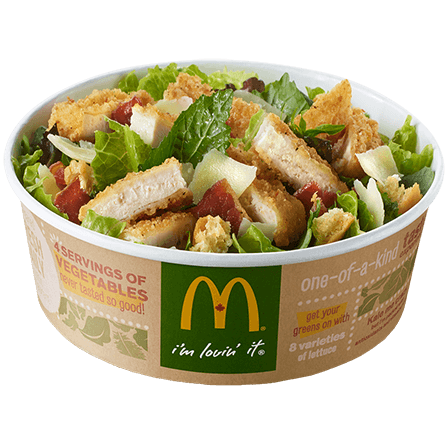
The past few years have not been kind to McDonald’s and its competitors in the fast food industry. Diners are flocking to fast-casual restaurants like Panera Bread, Pieology or Chipotle (until that company’s recent struggles) out of concern over the ingredients in their food.
McDonald’s sales improved last quarter thanks largely to rolling out an all-day breakfast meal, but the Golden Arches’ long-term prospects are still uncertain.
The fast food giant has tried to venture out of its comfort zone: It test-marketed organic hamburgers and regaled food writers by inviting a Los Angeles chef to cook a meal entirely out of McD’s ingredients. But the company still has a long way to go before it lures in the younger and health-conscious customers who are just not “lovin’ it.”
Speaking of health, McDonald’s has long offered salads but struggles to turn that menu offering into significant sales. After past marketing campaigns that mocked the very idea of kale, the company dabbled with that dark leafy green on the menu in test markets across the world. That sounds like a step in the right direction to attract the foodie and hipster crowds, except McDonald’s ran into a big problem.
It turns out that in Canada, McDonald's salads that include kale have more calories than a Double Big Mac.
The culprit, it turns out, is the salad dressing. Depending on the salad ordered, the amount of calories ranges anywhere from 280 to 520 — an amount not completely unreasonable. But upon adding the “pure” Asiago Caesar dressing, you will add 210 calories and 260 milligrams of sodium to your lunch. Options such as the “calorie-wise” Asiago or feta will heap another 300-some milligrams of sodium to your meal. So, that healthy craving for a salad with crispy chicken and a full ramekin of dressing will cost you the time at the gym to work off 730 calories and 53 grams of fat — more than a Double Big Mac.
For a company as under the microscope as McDonald’s, the lack of foresight is puzzling. The company takes months, even years, to test out new menu items. To its credit, it succeeded with snack items such as yogurt parfaits and chicken wraps (and that McD’s coffee!) that are not a complete coronary disaster. In this case, a simple vinegar-and-oil dressing with a secret and hyper-marketed blend of seasonings could have done the trick and avoided the embarrassment of just about every publication and blog playing the “gotcha” card.
And fresh ingredients aside, McDonald’s still has many questions about the health impact of its products, as in those additives and preservatives that have allowed a Happy Meal to remain intact after six years.
Image credit: McDonald’s Canada

Leon Kaye has written for 3p since 2010 and become executive editor in 2018. His previous work includes writing for the Guardian as well as other online and print publications. In addition, he's worked in sales executive roles within technology and financial research companies, as well as for a public relations firm, for which he consulted with one of the globe’s leading sustainability initiatives. Currently living in Central California, he’s traveled to 70-plus countries and has lived and worked in South Korea, the United Arab Emirates and Uruguay.
Leon’s an alum of Fresno State, the University of Maryland, Baltimore County and the University of Southern California's Marshall Business School. He enjoys traveling abroad as well as exploring California’s Central Coast and the Sierra Nevadas.














